This is the case of Asiagomphus melaenops. The observation was made on May 19, 1991 in Kobe City.
Emergence - Two types of emergence
A typical example of "upright type emergence":
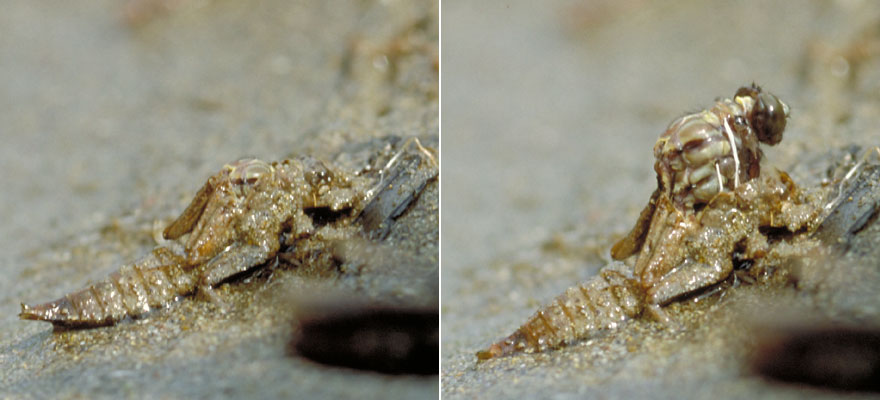
At 9:02, a larva left water to emerge (left). As soon as the larva became motionless on the bank, the adult began to emerge by splitting larval skin on the thorax (right).

Then the adult freed head and thorax and stood still (left). The adult rested for 8 minutes to harden its legs. From the posture at this stage, this type of emergence is termed "upright type" (left). The adult suddenly bended its upper half of the body forward to extract its abdomen (right).
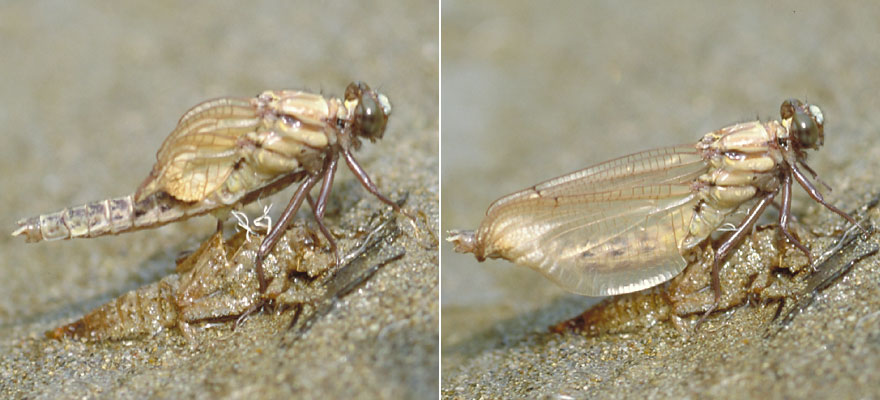
The abdomen had been extracted successfully. The adult was then supported by its legs which were able to harden in the resting stage (left). After extracted its abdomen, the wings began to expand not evenly but gradually from their basements toward apical margins, being used blood pressure (right).
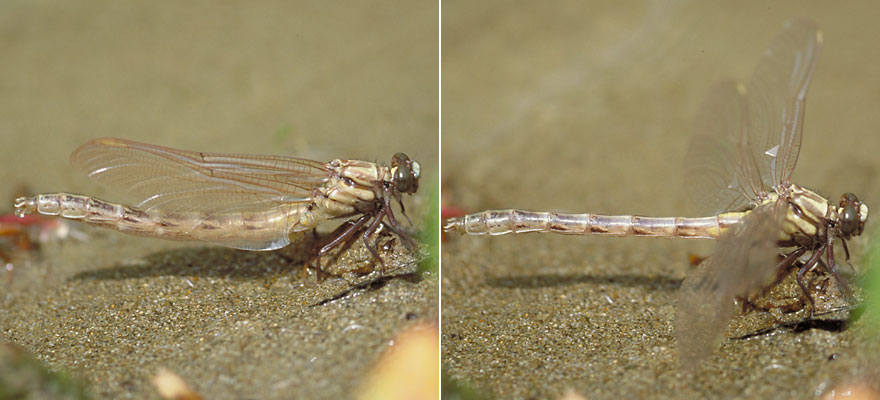
The abdomen was hardly inflated then. After complete expansion of the wings, the abdomen was inflated to full length by the continued swallowing of air (left). At this time, water dripped from the tip of the abdomen by air pressure. The wings opened but body color was still pale (right). At 10:20 maiden flight took place before its body harden.
If you want, or need, to observe "upright type" emergence of odonates in your house, it is the best for you to collect those larvae which have swollen wing buds which is the sign of emergence beginning soon. Such larvae generally gather in the shallow water. The larvae collected are put into a small container with water and a small stone (about 10cm in diameter) is set in it as a support for emergence. The container must be placed where the larvae are not disturbed by man's activity, because larvae which will emerge are very nervous. No food is needed.
Emergence - Two types of emergence
A typical example of "Hanging type Emergence"
This is the case of Anax nigrofasciatus nigrofasciatus. The larva was collected on February 26, 1991 at Yamada-cho, Kitaku, Kobe, which was in the final instar then. The date of emergence was on April 18-19, 1991. Observed in the house.
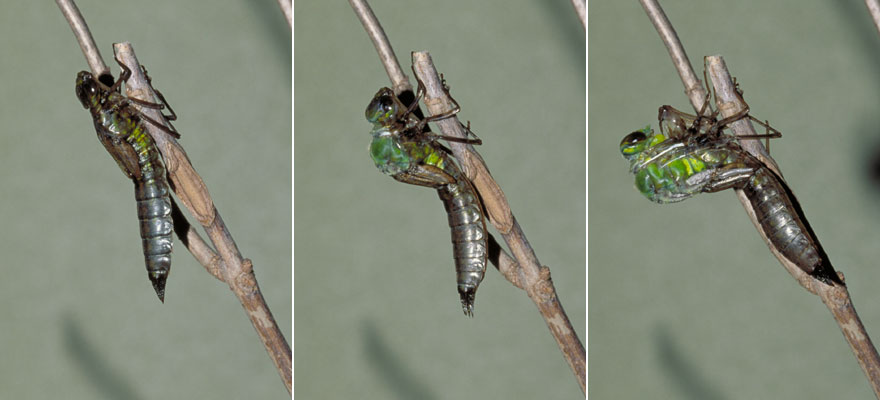
At 23:05, the larva climbed up a support above water and then wriggled its abdomen convulsively from side to side to ensure that adequate space existed for emergence. After those movements, it remained motionless on the support for about 25 minutes (left). The adult began to emerge by splitting larval skin on thorax (center). The adult freed head and thorax (right).
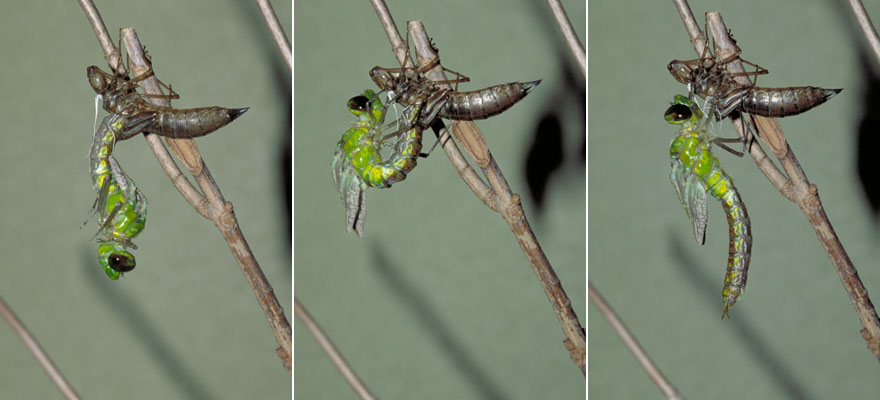
The adult rested for about 30 minutes to harden its legs. From the posture at this stage, this type of emergence is termed "hanging type" (left). The adult suddenly got its upper half of the body up to extract its abdomen (center). The abdomen had been extracted successfully. The adult was then supported by its legs which were able to harden in the resting stage (right).

After successfully extracted its abdomen, the wings began to expand evenly using blood pressure, but the abdomen was hardly inflated (left). After complete expansion of the wings, the abdomen was inflated to full length by the continued swallowing of air. At this time, water dripped from the tip of the abdomen by air pressure. A drop of water just under the tip of abdomen can be seen on the photograph (center). The body hardened and the wings opened. Emergence had completed. In nature, adults usually fly somewhere away before sunrise (right).
If you want, or need, to observe "hanging type" emergence of odonates in your house, it is the best for you to collect those larvae which have swollen wing buds and transparent eyes which are the sign of emergence beginning soon. Such larvae generally gather in the shallow water, or cling to an emergent material such as aquatic plant stems, exposing their head and thorax in the air. The larvae collected are put into a small container with water and two or three twigs are set vertically in it as supports for emergence. The container must be placed where the larvae are not disturbed by man's activity, because larvae which will emerge are very nervous. No food is needed.
References
Eda S., 1976, Collection and observation of Odonata. New Science Co. Tokyo. -[in Jap.]
Corbet P.S., 1962. A biology of dragonflies. Witherby, London.
Dunkle S.W., 1990. Damselflies of Florida, Bermuda and the Bahamas. Gainesville, Florida - Washington, D.C.